CantoSwap Fee Calculator
CANTO
Native token of the Canto blockchain
RAGE
Utility token for Canto ecosystem
Trade Cost Breakdown
Swap Fee: 0.00 CANTO (0.30% of trade)
Protocol Fee: 0.00 CANTO (0.05% of trade)
Liquidity Provider Fee: 0.00 CANTO (0.25% of trade)
Gas Cost: 0.00 CANTO
Total Cost: 0.00 CANTO
Total Cost (USD): $0.00
Important Information
Based on current CantoSwap fee structure:
- Standard swap fee: 0.30% (0.25% to LPs, 0.05% to protocol)
- Gas fee: ~0.001 CANTO (~$0.02 at current rates)
- Slippage tolerance affects the actual amount received
If you’ve been following the crypto‑decentralized finance scene, you’ve probably heard of the Canto blockchain. One of its most talked‑about components is CantoSwap, a decentralized exchange (DEX) built to let users trade native Canto assets without a middle‑man.
TL;DR
- CantoSwap is a DEX on the Canto network, using an automated market maker (AMM) model.
- It mainly supports CANTO and RAGE token pairs, with a few emerging pools.
- Fees are typical for AMM DEXs (around 0.3% per swap) and include a small protocol fee.
- Security relies on smart‑contract audits; users must keep their private keys safe.
- Getting started requires a Canto‑compatible wallet (e.g., MetaMask) and some CANTO for gas.
What Is CantoSwap?
CantoSwap is a decentralized exchange that operates on the Canto blockchain, allowing peer‑to‑peer token swaps without a central order book. It launched alongside the Canto ecosystem in early 2023, aiming to provide fast, low‑cost trades for Canto‑native assets.
How Does the Platform Work?
The exchange runs on an Automated Market Maker (AMM) model, similar to Uniswap. Liquidity providers (LPs) deposit pairs of tokens-most commonly CANTO and RAGE-into smart contracts. In return, they earn a share of swap fees proportional to their contribution.
When you trade, the AMM uses a constant‑product formula (x*y=k) to determine price impact. This means larger trades cause more slippage, so users often set a tolerance level before confirming a swap.
User Experience and Wallet Integration
The UI is intentionally minimalist: a clean swap box, liquidity pool overview, and a “My Positions” tab. It works best on desktop browsers, but a responsive design means mobile users can trade via the same interface.
For wallet connectivity, CantoSwap supports any wallet that can interact with the Canto network. The most popular choice is MetaMask, which can be configured with the Canto RPC endpoint (https://rpc.canto.io). Once connected, your wallet shows the CANTO balance you’ll need for gas fees.
Fees, Liquidity, and Slippage
Exact fee schedules aren’t published on a separate page, but the platform follows the standard AMM pattern: a 0.3% swap fee, of which 0.25% goes to LPs and 0.05% to the protocol treasury. Liquidity depth is modest compared with Ethereum‑based DEXs; the CANTO‑RAGE pool typically holds around 150K CANTO and 80K RAGE, translating to a daily volume of roughly $200K (as of Q3‑2025).
Because the pool size is limited, high‑value trades can hit noticeable slippage. Users can mitigate this by splitting large orders or waiting for off‑peak hours when the network faces less congestion.
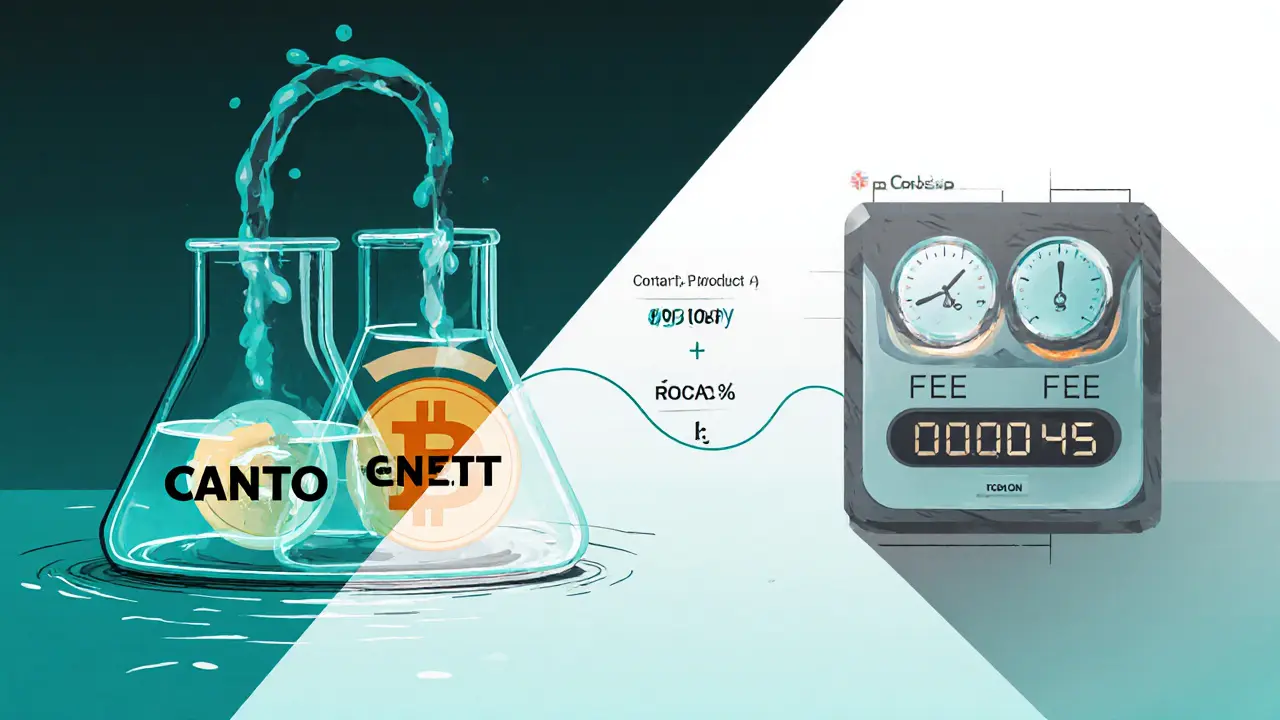
Security and Regulatory Compliance
Security on a DEX hinges on smart‑contract audits. CantoSwap’s contracts were audited by a reputable firm (CertiK) in early 2024, with no critical findings. However, as with any DeFi protocol, users retain custody of their private keys; a compromised wallet results in irreversible loss.
From a tax perspective, every swap generates a blockchain event that can be traced. Tax authorities in several jurisdictions (including NewZealand) have begun requiring crypto users to report DEX activity. It’s wise to export transaction logs from your wallet and use a crypto‑tax calculator to stay compliant.
Community, Governance, and Support
The platform leans heavily on community governance. Holders of the CANTO token can vote on fee adjustments, new pool listings, and protocol upgrades via on‑chain proposals. Discussion happens primarily on the official Canto Discord and a subreddit dedicated to Canto ecosystem projects.
Customer support is limited to community‑driven channels-no dedicated ticket system exists. That means response times vary, but the active community often provides quick help for common issues like wallet connection or liquidity withdrawal.
How CantoSwap Stacks Up Against Other DEXs
| Feature | CantoSwap | Uniswap (Ethereum) | SushiSwap (Polygon) |
|---|---|---|---|
| Primary Chain | Canto | Ethereum | Polygon |
| Typical Swap Fee | 0.30% (0.25% LP, 0.05% protocol) | 0.30% | 0.30% |
| Gas Cost (average) | ≈0.001CANTO (~$0.02) | ≈$12‑$25 | ≈$0.15 |
| Top Liquidity Pools | CANTO‑RAGE | ETH‑USDC, DAI‑USDC | MATIC‑USDC |
| Audit Status | CertiK (2024) - no critical issues | Multiple audits, occasional minor bugs | Audited by PeckShield (2023) |
In short, CantoSwap shines for cheap, fast swaps inside the Canto ecosystem but can’t match the sheer depth of liquidity you’ll find on Ethereum‑based DEXs. If you’re already holding CANTO or RAGE, the low gas and community‑driven governance make it a compelling option.
Step‑by‑Step: Getting Started on CantoSwap
- Set up a Canto‑compatible wallet (MetaMask is the easiest). Add the Canto RPC URL:
https://rpc.canto.io. - Acquire a small amount of CANTO to cover gas. You can bridge from Ethereum via the official Canto Bridge or buy on a centralized exchange and withdraw to a Canto address.
- Navigate to cantoswap.io and click “Connect Wallet”. Approve the connection in MetaMask.
- Select the token pair you want to trade (e.g., RAGE → CANTO). Enter the amount, set your slippage tolerance (default 0.5% works for most trades), and confirm.
- After the transaction confirms (usually under 5 seconds), you’ll see the swapped tokens in your wallet.
- If you want to earn fees, go to the “Pool” tab, add liquidity to an existing pool, and receive LP tokens that represent your share.
Remember to keep a backup of your seed phrase; losing it means you lose access to all funds on CantoSwap.
Pros & Cons
- Pros
- Very low gas fees compared to Ethereum.
- Fully on‑chain; no custodial risk from the platform.
- Active community governance.
- Simple UI good for beginners.
- Cons
- Limited token listings-mostly Canto‑native assets.
- Liquidity depth is modest; large trades can suffer slippage.
- Support is community‑based, not 24/7 professional help.
- Regulatory clarity is still evolving for Canto‑based services.
Bottom Line
If you’re already in the Canto ecosystem, CantoSwap review shows that the exchange delivers fast, cheap swaps with a transparent fee model. It isn’t a one‑stop shop for every crypto pair, but for CANTO, RAGE, and emerging Canto‑native projects it’s the go‑to DEX. Keep an eye on liquidity growth and future governance proposals-those will dictate whether CantoSwap can expand beyond its niche.
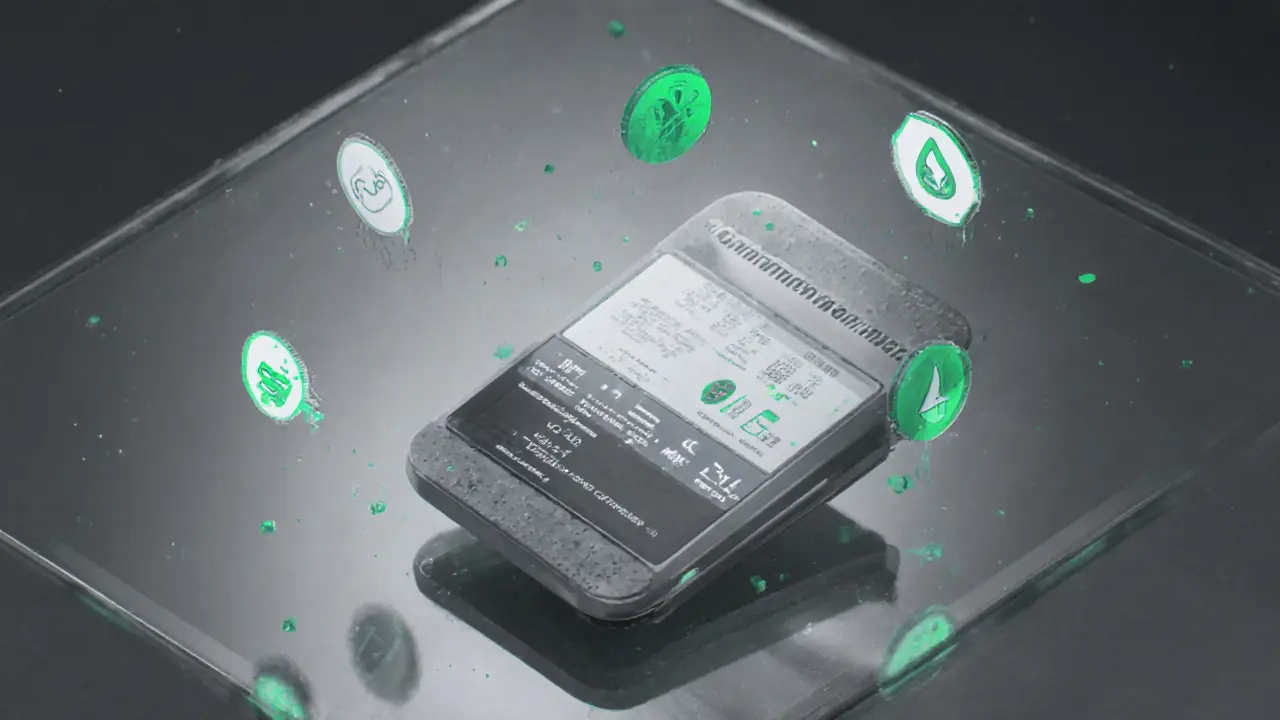
Frequently Asked Questions
Is CantoSwap a centralized exchange?
No. CantoSwap is a decentralized exchange that runs entirely on smart contracts on the Canto blockchain. Users retain full control of their private keys.
What tokens can I trade on CantoSwap?
The most active pools are CANTO‑RAGE, CANTO‑USDC, and a few newer project tokens. New pools are added through community proposals.
How much does a swap cost?
Swaps incur a 0.3% fee (0.25% to liquidity providers, 0.05% to the protocol) plus a tiny gas fee, usually under $0.05 USD.
Is CantoSwap safe to use?
The contracts were audited by CertiK in 2024 with no critical vulnerabilities. Security still depends on you safeguarding your wallet’s private keys.
Can I provide liquidity and earn fees?
Yes. By depositing token pairs into a pool you receive LP tokens that accrue a share of the 0.25% trader fee proportionally to your stake.
What wallet should I use?
MetaMask is the most common, but any wallet that supports custom RPC endpoints (e.g., Trust Wallet, Rainbow) works with CantoSwap.


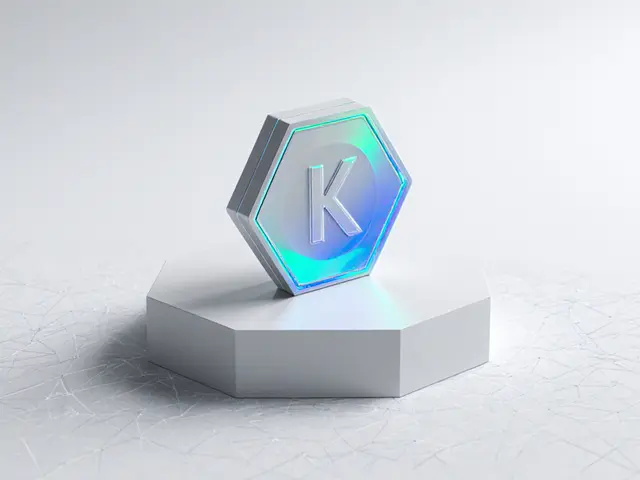
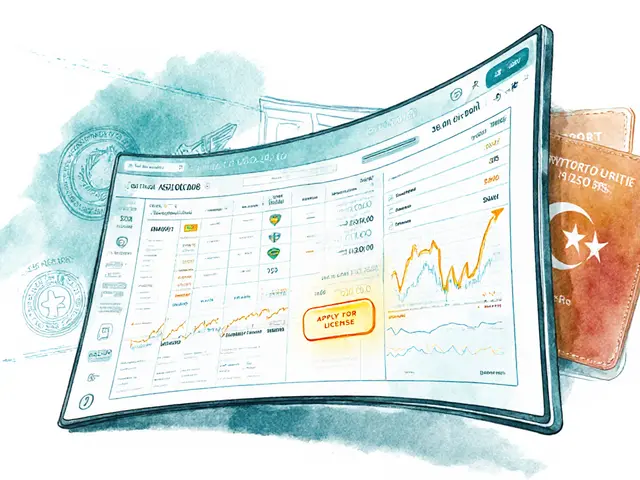
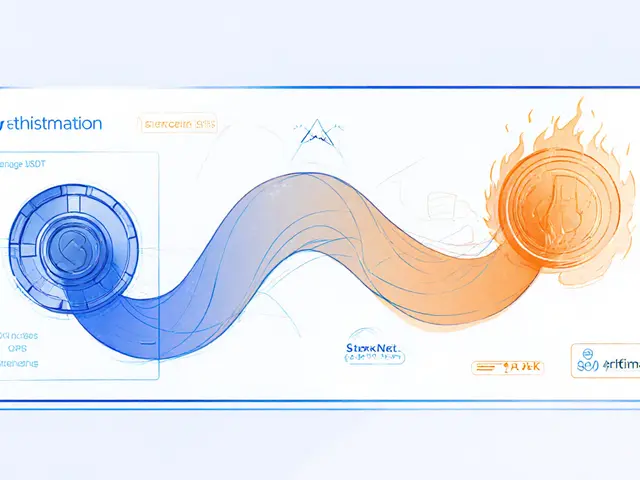
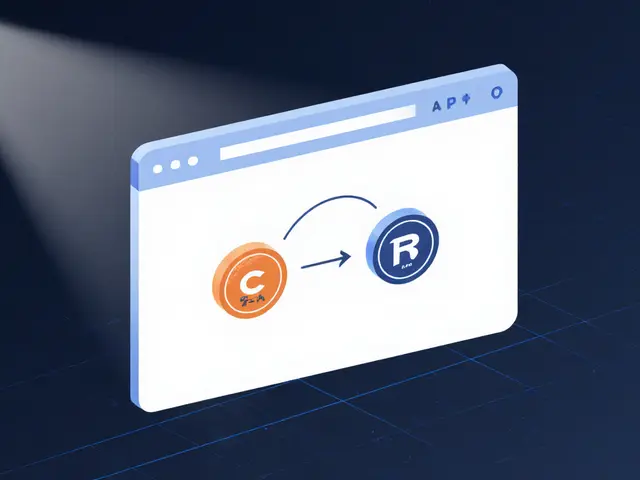
Dyeshanae Navarro
10 July, 2025 . 10:10 AM
I've been thinking about how CantoSwap fits into the broader DeFi picture. The fee structure seems straightforward, which is good for newcomers. Remember to consider slippage when planning trades, especially with lower liquidity pools. It's also wise to keep an eye on gas costs, even if they appear modest. Overall, staying informed will help you navigate the platform safely.
Matt Potter
12 July, 2025 . 17:43 PM
Wow, CantoSwap really nails the user experience! The calculator makes everything crystal clear-no hidden fees. Jump in and trade with confidence; the protocol fee is tiny compared to other DEXs. Keep your eyes on the LP rewards and you’ll see how aggressive you can get with yields. Let’s keep the momentum going!
Marli Ramos
15 July, 2025 . 01:16 AM
looks kinda meh 🤷♀️
tim nelson
17 July, 2025 . 08:50 AM
I get why some folks might be cautious about new DEXs. CantoSwap’s low fees are a bright spot, but the ecosystem is still growing. Take your time to test small amounts first; that way you’ll feel more comfortable. It’s okay to ask for help if you hit a snag. We’re all learning together.
Lisa Stark
19 July, 2025 . 16:23 PM
When we examine a protocol like CantoSwap, we see a microcosm of market dynamics. Fees act as both a friction and a signal, guiding liquidity where it’s needed. The balance between protocol and LP fees reflects a shared incentive structure. Such designs remind us that collaboration underlies most financial innovation. It’s a subtle dance of trust and utility.
Logan Cates
21 July, 2025 . 23:56 PM
Sure, they brag about “low fees,” but have you considered who actually profits? Every swap routes through hidden contracts that could siphon value. The community talks about decentralization, yet the core team holds a disproportionate amount of governance tokens. I’m not saying it’s a scam, but stay skeptical; the devil’s in the code.
Shelley Arenson
24 July, 2025 . 07:30 AM
Great rundown! The fee breakdown really helps newbies understand what they’re paying. 👍 Let’s keep sharing tips and keep the community strong. 🙌
Joel Poncz
26 July, 2025 . 15:03 PM
I feel the same way-seeing the gas cost laid out makes things less scary. Keep testing small swaps, it’s the best way to learn without big losses. If you ever need a hand, just shout.
Kris Roberts
28 July, 2025 . 22:36 PM
Honestly, the UI feels pretty smooth, and the fee numbers aren’t shocking. I tried a 0.5% slippage and got the expected amount, no surprises. It’s cool to see a DEX that keeps things simple while still offering decent LP rewards. Anyone else experimenting with cross‑chain bridges?
lalit g
31 July, 2025 . 06:10 AM
From a neutral standpoint, CantoSwap offers a viable alternative to Ethereum‑based DEXs. The lower gas fees are attractive, especially for smaller traders. However, the platform’s adoption rate will determine long‑term liquidity depth. Let’s watch how the ecosystem evolves over the next few months.
Reid Priddy
2 August, 2025 . 13:43 PM
While many hail the low fees as a win, one must ask whether the protocol sacrifices security for cost. Minimal gas doesn’t automatically mean safety; the smart contracts need rigorous audits. Users often overlook the risk of impermanent loss in LP positions, which can outweigh fee savings. Proceed with caution.
Shamalama Dee
4 August, 2025 . 21:16 PM
The explanation of the fee components is clear and well‑structured. It’s essential for newcomers to understand each part-swap fee, protocol fee, and LP fee-so they can make informed decisions. Additionally, keeping gas costs in mind prevents unexpected expenses. If you have questions about using the calculator, feel free to ask.
scott bell
7 August, 2025 . 04:50 AM
Whoa the fee calculator is like a crystal ball for traders it shows you exactly where your money goes and why that's pretty wild but also kind of empowering you can actually see the protocol cut versus the LP cut and even the gas cost it's like peeling back the layers of this financial onion and realizing there's more than meets the eye what do you think about the slippage tolerance setting does it feel like a safety net or a hurdle
vincent gaytano
9 August, 2025 . 12:23 PM
Ah, another DEX promising “low fees” while the unseen hands pull the strings. It’s as if we’re all part of a grand experiment where the only variable is our willingness to ignore the fine print. Sure, the numbers look neat, but remember: every transaction is a tiny surrender to the system. Enjoy the illusion of control.
Christina Lombardi-Somaschini
11 August, 2025 . 19:56 PM
In evaluating CantoSwap, one must first appreciate the architectural choices that underpin its fee model; the division between swap, protocol, and liquidity provider fees reflects a nuanced attempt to balance incentives across participants. The swap fee of 0.30 % is modest when juxtaposed with legacy platforms that often exceed 0.30 %-yet it remains sufficient to sustain operational costs. The protocol fee, constituting 0.05 % of each trade, is earmarked for development and governance initiatives, thereby fostering continual ecosystem growth. Liquidity providers, receiving 0.25 % of the trade, are compensated for the capital they allocate, mitigating exposure to impermanent loss. Moreover, the inclusion of a gas component, albeit nominal at approximately 0.001 CANTO, ensures that network overhead is transparently accounted for. Users are further afforded the ability to adjust slippage tolerance, a parameter that directly influences the final amount received and safeguards against adverse price movements. It is imperative to recognize that while the fee calculator offers clarity, the underlying market dynamics remain subject to volatility and external pressures. Consequently, traders should approach each swap with a calibrated risk appetite, cognizant of both explicit costs and implicit market risks. The platform’s user interface, characterized by a clean layout and responsive design, contributes to an accessible user experience, particularly for those newly acquainted with decentralized exchanges. Nonetheless, the reliance on on‑chain data necessitates vigilant monitoring of contract upgrades and governance proposals, as alterations may recalibrate fee structures without immediate fanfare. From a regulatory perspective, the decentralized nature of CantoSwap positions it within a gray area, mandating that participants stay informed of evolving legal frameworks. In sum, CantoSwap presents a compelling proposition for cost‑conscious traders, provided they maintain an informed and proactive stance. To maximize benefits, practitioners should periodically reassess their slippage settings, diversify across liquidity pools, and engage with community forums for real‑time insights. Ultimately, the platform’s efficacy hinges upon the collective stewardship of its users, developers, and liquidity providers alike. By embracing transparency and fostering collaborative governance, CantoSwap may well solidify its standing within the competitive DEX landscape.
katie sears
14 August, 2025 . 03:30 AM
Thank you for the comprehensive analysis; the depth of detail certainly clarifies many aspects of the fee architecture. I concur that continuous community engagement is vital for sustainable growth.
Gaurav Joshi
16 August, 2025 . 11:03 AM
Indeed, periodic reviews of slippage settings can markedly improve trade outcomes. Additionally, keeping abreast of governance votes ensures participants are not caught off guard by future fee adjustments.
Kathryn Moore
18 August, 2025 . 18:36 PM
Right. Stay sharp and trade smart
Christine Wray
21 August, 2025 . 02:10 AM
CantoSwap’s approach seems to strike a decent middle ground between cost efficiency and user transparency. It’s encouraging to see platforms prioritizing clear fee disclosures.
roshan nair
23 August, 2025 . 09:43 AM
Hey folks! If you’re fiddling with the calculator, try tweaking the slippage a bit higher when the market is choppy-sometimes you’ll actually land closer to your expected amount. Also, double‑check the gas estimate; a tiny typo can send you a surprise bill!
Jay K
25 August, 2025 . 17:16 PM
I appreciate the thorough breakdown provided earlier. Maintaining a respectful tone while discussing fee structures helps foster a constructive community dialogue.
Kimberly M
28 August, 2025 . 00:50 AM
Great info! 🌟 Thanks for making the fees easy to understand. 🙏
Navneet kaur
30 August, 2025 . 08:23 AM
i think you should read the contract code it's not that hard and you can see if anything shady is going on